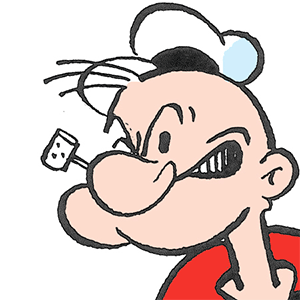Wandering Dubrovnik's city walls
Croatia, with thousands of miles of coastline on the Adriatic Sea, is Eastern Europe's Riviera. Holiday-makers love its pebbly beaches, predictably balmy summer weather and dramatic mountains. Croatia's top tourist town, Dubrovnik, is deservedly known as the "Pearl of the Adriatic," jutting confidently into the sea on the southern tip.
While Dubrovnik's museums are nothing special, this town is one of those places that you never want to leave. The real attraction here is the Old Town and its relaxing, breezy setting. It's a multigenerational celebration of life, where everybody's out enjoying an easygoing stroll or taking a dip in the sea.
For travelers, Dubrovnik's single best sight is the still-stout medieval wall that surrounds this city of about 40,000, offering an unforgettably scenic mile-long stroll above town. While constructed over many centuries, today's impressive fortifications date from the 1400s, when they were beefed up to defend against the Ottoman Turks.
Jockeying my way between cruise-excursion groups that have descended upon the town (800,000 cruisers stopped here in 2014), I climb the steep steps to the top of the mighty wall. As I begin a slow, circular, hour-and-a-half walk around the fortified perimeter of one of Europe's best-preserved medieval towns, I'm bombarded with ever-changing views. On one side is a sea of red rooftops; on the other side, the actual sea.
As I approach the Pile Gate wall entrance, I pause to enjoy a full frontal view of the Stradun, the 300-yard-long promenade that runs through the heart of Dubrovnik's Old Town. In the Middle Ages, merchants lined this drag; before that, it was a canal. Today this is the main artery of the city: an Old World shopping mall by day and sprawling cocktail party after dark.
Farther along, I look down and see a peaceful stone terrace perched above the sea, clinging like a barnacle to the outside of the city walls. Generously shaded by white umbrellas, this is my favorite Dubrovnik escape, a rustic outdoor tavern called Buza. The name means "hole in the wall" -- and that's exactly what you'll have to climb through to get there. Filled with mellow tourists and bartenders pouring wine from tiny screw-top bottles into plastic cups, Buza comes with castaway views and Frank Sinatra ambience.
Looking inland from my ramparts perch, my eyes fall on a random arrangement of bright- and dark-toned red roof tiles. In this complex and once troubled corner of Europe, even a tranquil stroll around the walls comes with a poignant history lesson. After Croatia declared independence from Yugoslavia in 1991, the Yugoslav National Army laid siege to this town and lobbed mortars over the hill. Today, the new, brighter-colored tiles mark houses that were hit and have been rebuilt. At a glance, it's clear that more than two-thirds of the Old Town's buildings suffered bomb damage.
Surveying the rooftops, my thoughts turn to Pero, my B-and-B host, who spent years after the war turning the bombed-out remains of his Old Town home into a fine guesthouse. Upon my arrival last night, Pero uncorked a bottle of "orahovica" (the local grappa-like firewater). Hoping to write that evening with a clear head, I tried to refuse the drink. But this is a Slavic land. Remembering times when I was force-fed vodka in Russia by new friends, I knew it was hopeless. Pero made this hooch himself, with green walnuts. As he slugged down a shot, he handed me a glass, wheezing, "Walnut grappa -- it recovers your energy."
Pero reached under the counter and held up the mangled tail of a mortar shell, describing how the gorgeous stone and knotty-wood building he grew up in suffered a direct hit in the siege. He put the mortar in my hands. Just as I don't enjoy holding a gun, I didn't enjoy touching the twisted remains of that mortar. Pero explained that he gets a monthly retirement check for being wounded in the war, but he got bored and didn't want to live on the tiny government stipend -- so he went to work rebuilding his guesthouse.
I took Pero's photograph. He held up the mortar and smiled. I didn't want him to hold up the mortar and smile, but that's what he did. He seemed determined to smile -- as if it signified a personal victory over the destruction the mortar had wrought.
It's impressive how people can weather tragedy, rebuild, and move on. In spite of the terrors of war just a couple of decades ago, life here is once again very good, and, from my perch here atop the city walls, filled with promise.
IF YOU VISIT...
SLEEPING: Hotel Stari Grad has eight extremely stylish rooms a half-block off the Old Town's main drag (splurge, www.hotelstarigrad.com). Ivana and Anita Raic rent three apartments with modern flourishes (moderate, www.apartments-raic.com).
EATING: Dalmatino offers some of the best traditional Dalmatian cooking in the city (Miha Pracata 6, tel. 020/323-070). Konoba Kamenice, a no-frills fish restaurant on a market square, is a local institution (Gunduliceva poljana 8, tel. 020/323-682).
GETTING AROUND: Dubrovnik's Old Town is easily walkable, while buses get you farther afield.
TOURIST INFORMATION: www.tzdubrovnik.hr.
========
(Rick Steves (www.ricksteves.com) writes European travel guidebooks and hosts travel shows on public television and public radio. Email him at rick@ricksteves.com and follow his blog on Facebook.)
(c)2015 RICK STEVES DISTRIBUTED BY TRIBUNE MEDIA SERVICES, INC.










Comments